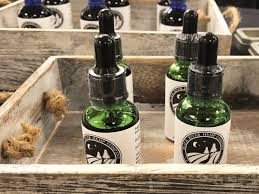Pipes and Winter: Protecting Your Plumbing
As winter approaches, it brings with it the beauty of snow, the joy of holidays, and the cozy warmth of a crackling fireplace. However, it also brings the risk of frozen and burst pipes, which can lead to costly repairs and water damage. To keep your plumbing safe and sound during the chilly months, it’s essential to take proactive measures. In this blog post, we’ll explore the risks posed by cold weather to your plumbing and provide tips on how to protect it.
The Dangers of Frozen Pipes
Frozen pipes are a common problem in colder climates. When water inside a pipe freezes, it expands, putting pressure on the pipe’s walls. This pressure can cause the pipe to crack or burst, leading to leaks and potentially extensive water damage once the ice thaws. The areas most vulnerable to freezing include:
- Exterior Walls: Pipes located on exterior walls are susceptible to cold drafts and temperature drops.
- Unheated Areas: Pipes in unheated spaces like basements, garages, crawl spaces, and attics are at risk.
- Outdoor Plumbing: Garden hoses, outdoor faucets, and sprinkler systems can freeze and burst if not properly winterized.

How to Protect Your Plumbing
- Insulate Pipes: Wrap pipes in insulation sleeves or use heat tape or cable to provide additional warmth. Pay particular attention to pipes in unheated or exposed areas.
- Seal Cracks and Gaps: Seal any gaps or cracks in your home’s walls and foundation to prevent cold air from reaching your plumbing.
- Keep Cabinets Open: In the kitchen and bathroom, open cabinet doors to allow warm air to circulate around pipes under sinks.
- Maintain Heat: Keep your home adequately heated, even when you’re away, to maintain a consistent temperature and prevent freezing.
- Let Faucets Drip: On extremely cold nights, allow faucets to drip slowly. Moving water is less likely to freeze.
- Disconnect Hoses: Before winter arrives, disconnect and drain garden hoses. Store them indoors to prevent damage.
- Insulate Attics and Basements: Properly insulate and seal your attic and basement to maintain a warmer environment.
- Seal Crawl Spaces: If your home has a crawl space, seal it properly and add insulation to protect pipes underneath.
- Use Pipe Sleeves: Install foam pipe sleeves or fiberglass pipe insulation on exposed pipes.
- Install Heat Cables: Consider installing heat cables or heat tape on vulnerable pipes to prevent freezing.
- Close Exterior Vents: Close and seal off exterior vents to prevent cold air from entering crawl spaces and attics.
- Winterize Outdoor Faucets: Disconnect and drain garden hoses, and install insulated faucet covers on outdoor spigots.
- Service Your Heating System: Regularly service your heating system to ensure it’s operating efficiently and can provide adequate warmth throughout your home.
- Know How to Shut Off Water: Familiarize yourself with the location of your main water shutoff valve. If a pipe does burst, you can quickly turn off the water to prevent further damage.
Dealing with Frozen Pipes
Despite your best efforts, pipes can still freeze. If you suspect a frozen pipe:
- Keep the Faucet Open: Turn on the faucet connected to the frozen pipe. As the ice melts, running water can help relieve pressure and prevent a burst pipe.
- Apply Heat: Use a hairdryer, heat lamp, or electric heating pad to gently thaw the frozen section of the pipe. Start at the faucet and work your way toward the frozen area.
- Do Not Use Open Flames: Never use an open flame or propane torch to thaw pipes. This can lead to fire hazards and damage the pipe.
- Call a Professional: If you can’t locate the frozen area, or if the pipe has already burst, contact a licensed plumber for immediate assistance.
Winter Plumbing Maintenance
Performing routine maintenance before winter can help reduce the risk of frozen pipes and other cold-weather plumbing issues:
- Inspect and Clean Gutters: Clogged gutters can lead to ice dams, which can damage your roof and lead to leaks. Ensure gutters are clean and draining properly.
- Check for Drafts: Seal any gaps around doors and windows to keep cold air out and warm air in.
- Service Your Water Heater: Have your water heater inspected and serviced to ensure it’s working efficiently, providing you with hot water during the winter.
- Winterize Sprinkler Systems: Drain your irrigation system and blow out any remaining water to prevent freezing and damage.
- Test Sump Pumps: Ensure your sump pump is in good working order, as melting snow and ice can lead to increased groundwater levels.
- Prepare for Emergencies: Create an emergency kit with essential tools, including a flashlight, pipe insulation, and a wrench for turning off the water.
By taking proactive measures and maintaining your plumbing system with the help of a residential plumber, you can protect your home from the hazards of winter weather. If you’re unsure how to perform any of these tasks or suspect frozen pipes, don’t hesitate to contact a professional plumber. A little preparation can go a long way in ensuring a warm and worry-free winter season for your home.




